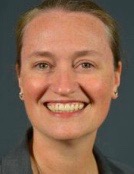Co-Located Conference AgendasBiosensors & Biosecurity Summit 2017 | Lab-on-a-Chip and Microfluidics: Companies, Technologies and Commercialization | Lab-on-a-Chip and Microfluidics: Emerging Themes, Technologies and Applications | POC Diagnostics, Global Health-Viral Diseases 2017 | 

Monday, 2 October 201712:45 | Conference Registration, Materials Pick-Up, and Networking | |
Session Title: Opening Plenary Session -- Convergence of Microfluidics, POC Diagnostics and Biosensors |
| | 13:30 |  | Keynote Presentation Micro & Nanotechnologies For Physical Phenotyping of Cells
Dino Di Carlo, Armond and Elena Hairapetian Chair in Engineering and Medicine, Professor and Vice Chair of Bioengineering, University of California-Los Angeles, United States of America
My lab uses microtechnology to interface at the scale of biology to aid
in scientific investigation, develop new approaches to diagnose and
monitor disease, and engineer therapies. A part of our laboratory
develops tools to assay and exploit physical properties of cells in
diagnostics and drug screening. Physical properties of cells can provide
integrative, rapid, and low-cost information about disease. My
discussion will focus on instruments we have developed that quantify
single-cell physical phenotypes such as deformability, size, and
contractility. These new tools show promise to enable diagnostic and
screening approaches that assay immune cell function at the
point-of-care, tumor cell malignancy with higher confidence than
molecular markers alone, and many other cell phenotypes associated with
disease. |
| 14:00 |  | Keynote Presentation Re-envisioning Point-of-Care Pathogen Diagnostics for the Developed and Developing Worlds
Paul Yager, Professor, Department of Bioengineering, University of Washington, United States of America
Whether the purpose is to guide treatment of an individual’s infection,
or to control the outbreak of a pandemic, there is an urgent need for
low-cost rapid diagnostic devices capable of identifying the cause of
infectious disease that free testing from the centralized laboratory.
“Ubiquitous diagnostics”, aided by the revolution that brought us
today’s distributed computing and communications, can bring the best
diagnostic capabilities to physicians’ office laboratories and
pharmacies in the developed world, or to places in the developing world
where nothing is available now. The practice of medicine itself can be
improved if diagnostic tests could be carried out more rapidly and
pervasively. The Yager lab has been engaged in a 20-year pursuit of
microfluidics-based tools and complete systems for pathogen
identification in human samples, most recently in an inexpensive
instrument-free single-use disposable format that could be used by
consumers in their homes and by healthcare workers in low-resource
settings in the developing world. The central effort today is to
utilize capillary action in porous materials to eliminate the need for
pumps and other equipment to control fluid flow. By coupling the
chemical testing with cell phones, critical health data can be analyzed
rapidly and anywhere, and the best healthcare decisions can be made for
patients, for regional healthcare systems, and for global health. There
have been 3 analytical approaches pursued in our group: Identification
and quantification of 1) antibodies specific to pathogens, 2) proteins
of the pathogens, and 3) nucleic acid sequences derived from the
pathogens. We report on recent results on particularly simple
paper-based systems supported by NIH (detection of influenza proteins;
improvement of specificity of Zika virus serology), DARPA (detection of
DNA and RNA from bacterial and viral pathogens) and DTRA (detection of
proteins from the Ebola virus). All projects involve close
collaboration with partners inside and outside the university
environment, and are aimed at producing clinically useful tools for
point-of-care medicine. |
| 14:30 |  | Keynote Presentation Paper-based Nanobiosensors: Diagnostics Going Simple
Arben Merkoçi, ICREA Professor and Director of the Nanobioelectronics & Biosensors Group, Institut Català de Nanociencia i Nanotecnologia (ICN2), Barcelona Institute of Science and Technology (BIST), Spain
Biosensors field is progressing rapidly and the demand for cost
efficient platforms is the key factor for their success. Physical,
chemical and mechanical properties of cellulose in both micro and
nanofiber-based networks combined with their abundance in nature or easy
to prepare and control procedures are making these materials of great
interest while looking for cost-efficient and green alternatives for
device production technologies. Both paper and nanopaper-based
biosensors are emerging as a new class of devices with the objective to
fulfill the “World Health Organization” requisites to be ASSURED:
affordable, sensitive, specific, user-friendly, rapid and robust,
equipment free and deliverable to end-users. How to design simple
paper-based biosensor architectures? How to tune their analytical
performance upon demand? How one can ‘marriage’ nanomaterials such as
metallic nanoparticles, quantum dots and even graphene with paper and
what is the benefit? How we can make these devices more robust,
sensitive and with multiplexing capabilities? Can we bring these low
cost and efficient devices to places with low resources, extreme
conditions or even at our homes? Which are the perspectives to link
these simple platforms and detection technologies with mobile phone
communication? I will try to give responses to these questions through
various interesting applications related to protein, DNA and even
contaminants detection all of extreme importance for diagnostics,
environment control, safety and security. |
| 15:00 |  | Keynote Presentation Microfluidic Devices – Key Technologies to Enable Real-Time Patient Monitoring and Treatment
Martyn Boutelle, Professor of Biomedical Sensors Engineering, Imperial College London, United Kingdom
Clinical practice is beginning to wake upto the potential of real-time molecular information from venerable tissue as a means to understand the progression in the tissue of injury or disease. Such patterns of molecular changes, particularly when combined with paternal of physical of electrical signatures, offer the exciting possibility of allowing clinicians to guide therapy on an individualized basis in real time. In this presentation I will describe the development of 3D printed microfluidic devices connected to wireless electronics for transplant organ and patient monitoring. Tissue sampling is via integrated microdialysis probes. Concentrations of important biomarkers are measured using microscale amperometric biosensors (energy metabolites, and excitatory neurotransmitters) and ion-selective electrodes (ISE) for tissue ionic balance. Detailed patterns of ionic responses can be revealed using a high density ISE array within the flow stream. High time resolutions can be achieved using a novel droplet based microfluidic system. The presentation with describe the design and optimization challenges and include clinical examples from our recent work. |
| 15:30 | Coffee Break and Networking | 16:15 |  | Keynote Presentation Microfluidics for Bottom-Up Tissue Engineering
Shoji Takeuchi, Professor, Center For International Research on Integrative Biomedical Systems (CIBiS), Institute of Industrial Science, The University of Tokyo, Japan
In this presentation, I will talk about several Microfluidic-based
approaches for the rapid construction of 3D-cellular construct.
Large-scale 3D tissue architectures that mimic microscopic tissue
structures in vivo are very important for not only in tissue engineering
but also drug development without animal experiments. We demonstrated a
construction method of 3D tissue structures by using cell beads and
cell fibers. To prepare the cellular beads, we used an axisymmetric flow
focusing device (AFFD) that allows us to encapsulate cells within
monodisperse collagen beads. By molding these cell beads into a 3D
chamber and incubating them, we successfully obtained complicated and
milli-sized 3D cellular constructs. As the cell fibers, a
cell-encapsulating core-shell hydrogel fiber was produced in a double
coaxial laminar flow microfluidic device. When with myocytes,
endothelial, and nerve cells, they showed the contractile motion of the
myocyte cell fiber, the tube formation of the endothelial cell fibers
and the synaptic connections of the nerve cell fiber, respectively. By
reeling, weaving and folding the fibers using microfluidic handling,
higher-order assembly of fiber-shaped 3D cellular constructs can be
performed. Moreover, the fiber encapsulating beta-cells is used for the
implantation of diabetic mice, and succeeded in normalizing the blood
glucose level. |
| 16:45 |  | Keynote Presentation Mixed-Scale Fluidic System: Searching for Drug-induced DNA Damage in Circulating Tumor Cells
Steve Soper, Foundation Distinguished Professor, Director, Center of BioModular Multi-Scale System for Precision Medicine, The University of Kansas, United States of America
Improved therapies that yield more cures and better overall survival for
cancer patients are needed. For example, women with breast cancer have a
5-year survival rate of 22% (Stage IV) and 72% (Stage III).
Doxorubicin, cisplatin, paclitaxel, and tamoxifen are examples of drugs
used for treating breast cancer with selection of therapy typically
based on the classification and staging of the patient’s cancer. While
treatment regimens assigned to some patients may be optimal using the
current classification model, others within certain breast cancer
sub-types fail therapy. New assays must be developed to determine how a
patient’s physiology and genetic makeup affects drug efficacy. In this
presentation, a series of chips are used for the isolation and
processing of circulating tumor cells (CTCs). The chips quantify
response to therapy using three pieces of information secured from the
CTCs; (1) CTC number; (2) CTC viability; and (3) the frequency of DNA
damage (abasic (AP) sites) in genomic DNA (gDNA) harvested from the
CTCs. Microscale chips are used for CTC selection, CTC enumeration and
viability determinations. The chip to read AP sites is a nanosensor chip
made via nano-imprinting in plastics and contains a nanochannel with
dimensions less than the persistence length of double-stranded DNA (~50
nm). Labeling AP sites with fluorescent dyes and stretching the gDNA in
the nanochannel to near its full contour length allows for the direct
readout of the AP sites, even from a single CTC. This information is
used to determine how a patient is responding to therapy. |
| 17:15 |  | Keynote Presentation PCR-Free MicroRNA Quantification Based on Ion-Selective Nanoporous Membranes and Nanopores
Hsueh-Chia Chang, Bayer Professor of Chemical and Biomolecular Engineering, University of Notre Dame, Interim Chief Technology Officer, Aopia Biosciences, United States of America
We report an integrated biochip platform that can identify and quantify
low copy numbers of microRNA biomarkers in a heterogeneous physiological
sample like blood, saliva or urine. This quantification assay is done
without PCR amplification, reporter labeling, extensive off-chip
pretreatment and expensive optical sensors. Consequently, it does not
introduce PCR/ligation bias and limits analyte loss during
pretreatment. The main components of the integrated biochips are
nanoporous membranes and solid-state nanopores with pore radii smaller
than the nm-scale Debye length. We use the ion concentration and charge
polarization features of the ion-selective membranes to control the
on-chip ionic strength, actuate pH by splitting water, lyse exosomes and
isolate/concentrate the target molecules. The final nanopore sensor or
sensor array utilizes surface modification and pore geometry to
preferentially delay the translocation time of the target microRNAs to
achieve single-molecule identification and quantification. The
integrated chip achieves a translocation frequency (throughput) that is
at least one hundred times higher than any literature or commercial
nanopore technology. |
| 17:45 |  | Keynote Presentation Nanomotor-Microchip Diagnostics: Moving the Receptor in Microchannel Networks
Joseph Wang, Chair of Nanoengineering, SAIC Endowed Professor, Director at Center of Wearable Sensors, University of California-San Diego, United States of America
This presentation will describe new motion-based microchip assays based on autonomously moving receptor-functionalized nanomotors. The new motor-based sensing approach relies on new capabilities of modern nano/microscale motors. Particular attention will be given to catalytic nanowire and microtube motors propelled by the electrocatalytic decomposition of a chemical fuel, The increased cargo-towing force of new man-made nanomotors, along with their precise motion control within microchannel networks, versatility and facile functionalization, can be combined for developing advanced microchip systems based on active transport. The motion-based biosensing strategy relies on the continuous movement receptor-modified microengines through complex samples in connection to diverse ‘on-the-fly’ biomolecular interactions of nucleic acids, proteins, bacteria or cancer cells. A variety of receptors, attached to self-propelled nanoscale motors, can thus move around the sample and, along with the generated microbubbles, lead to greatly enhanced fluid transport and accelerated recognition process. Selective capture and transport of target DNA and cancer cells from raw complex body fluids will be demonstrated. Key factors governing such motion-based sensing will be covered. The resulting assays add new and rich dimensions of analytical information and offer remarkable sensitivity, coupled with simplicity, speed and low costs. We will discuss the challenges of implementing molecular recognition into the nanomotor movement and for generating well-defined distance signals. New microengines with a ‘built-in’ recognition capability, based on boronic-acid or molecularly-imprinted outer layers, will also be discussed. The latter obviated the need for the receptor immobilization. The greatly improved capabilities of chemically-powered artificial nanomotors could pave the way to exciting and important bioanalytical applications and to sophisticated nanoscale and microchip devices performing complex tasks. |
| 18:15 | Networking Cocktail Reception with Beer, Wine and a Light Dinner in the Exhibit Hall. Engage with Colleagues and Visit the Exhibitors | 19:45 | Close of Day 1 of the Conference |
Tuesday, 3 October 201708:00 | Conference Registration, Materials Pick-Up, Morning Coffee and Breakfast Pastries | |
Session Title: Emerging Technologies and Innovation in Point-of-Care (POC) Diagnostics |
| | 09:00 |  | Keynote Presentation Printable Paper-Based Point-of-Care Aptasensors for Biomedical Monitoring
John Brennan, Professor and Director, Biointerfaces Institute, McMaster University, Canada
The talk will focus on the development of printable components to produce easily manufactured bioactive paper sensors with a range of capabilities, including integrated sample preparation, aptamer-based biorecognition, isotrhermal DNA amplification and text-based readout technologies. Examples will be provided to demonstrate multi-step reactions on paper for ultra-sensitive detection of infectious organisms and cancer biomarkers. |
| 09:30 |  | Keynote Presentation Shortening Development Time and Improving Performance of Rapid Diagnostic Tests
Bernhard Weigl, Director, Center for In-Vitro Diagnostics, Intellectual Ventures/Global Good-Bill Gates Venture Fund, United States of America
Lateral flow and similar rapid diagnostic assays (LFAs) are easy to use and manufacture, low cost, rapid, require little or no equipment to operate, and do not need to be refrigerated. However, they are generally not considered to be very sensitive or able to provide a quantitative result. This lack of sensitivity is not a fundamental property of LFAs but rather a consequence of the way they are developed, manufactured, and marketed. Historically, most lateral flow tests were developed and optimized by relatively small manufacturers with limited R&D capabilities and budgets, and were generally used only for analytical targets prevalent at high concentration in patient’s samples that were relatively easy to measure.In contrast, our group’s mission is to develop LFA-based assays for use in global health applications that are as sensitive as the best conventional diagnostic assays (in some cases even better) while retaining all their cost, simplicity, and usability advantages. We have developed a 3D modeling platform for paper-based assays and are using it to determine the theoretical limit of a particular assay variant, as well as a rapid array-based empirical optimization system for lateral flow assays. Together, these approaches allow the development of more sensitive assays with shortened development time. In this presentation we will describe the assay optimization methods we employ, as well as several assays under development, including ones for malaria, and TB. |
| 10:00 |  | Keynote Presentation Programmable Bio-Nano-Chip Platform: A Point-of-Care Biosensor System with the Capacity to Learn
John T McDevitt, Professor, Division of Biomaterials, New York University College of Dentistry Bioengineering Institute, United States of America
The combination of point-of-care (POC) medical microdevices and machine learning has the potential transform the practice of medicine. In this area, scalable lab-on-a-chip (LOC) devices have many advantages over standard laboratory methods, including faster analysis, reduced cost, lower power consumption, and higher levels of integration and automation. Despite significant advances in LOC technologies over the years, several remaining obstacles are preventing clinical implementation and market penetration of these novel medical microdevices. Similarly, while machine learning has seen explosive growth in recent years and promises to shift the practice of medicine toward data-intensive and evidence-based decision making, its uptake has been hindered due to the lack of integration between clinical measurements and disease determinations. In this talk, recent developments in the programmable bio-nano-chip (p-BNC) system, a biosensor platform with the capacity for learning will be highlighted. The p-BNC is a ‘platform to digitize biology’ in which small quantities of patient sample generate immunofluorescent signal on agarose bead sensors that is optically extracted and converted to antigen concentrations. The platform comprises disposable microfluidic cartridges, a portable analyzer, automated data analysis software, and intuitive mobile health interfaces. The single-use cartridges are fully integrated, self-contained microfluidic devices containing aqueous buffers conveniently embedded for POC use. A novel fluid delivery method was developed to provide accurate and repeatable flow rates via actuation of the cartridge’s blister packs. A portable analyzer instrument was designed to integrate fluid delivery, optical detection, image analysis, and user interface, representing a universal system for acquiring, processing, and managing clinical data while overcoming many of the challenges facing the widespread clinical adoption of LOC technologies. We demonstrate here the p-BNC’s flexibility through the completion of multiplex assays within the single-use disposable cartridges for numerous clinical applications including prostate cancer, ovarian cancer, and acute myocardial infarction. Toward the goal of creating ‘sensors that learn’, we have developed and describe here the Cardiac ScoreCard, a clinical decision support system for a spectrum of cardiovascular disease. The Cardiac ScoreCard approach comprises a comprehensive biomarker panel and risk factor information in a predictive model capable of assessing early risk and late-stage disease progression for heart attack and heart failure patients. |
| 10:30 | Coffee Break and Networking in the Exhibit Hall | 11:15 | Facilitating Point of Care Technology (POC) Development for Sexually Transmitted Infections (STI)
Joany Jackman, Senior Scientist, Technical Lead, Technology Development Core, Johns Hopkins Center for Point-of-Care Technologies Research for Sexually Transmitted Diseases, The Johns Hopkins University Applied Physics Laboratory, United States of America
The Johns Hopkins University Center for Point of Care Technology (POCT) for Sexually Transmitted Diseases (STD) is one of three collaborating centers in the Point-of-Care Technology Research Network (POCTRN) hosted by the National Institute of Health (NIBIB). The purpose of our Center is to assist developers of POCT along the process of commercialization. Similar to other Centers in the POCTRN, the mission of the JHU Center for POCT for STD is to facilitate technology development by providing a number of tools and resources to enhance POCT performance. These resources include 1)access to subject matter experts, 2) technical design reviews, 3)information on best practices, market characteristics and end user needs, 4) provide patient samples at no cost, 5) evaluate devices in clinical settings and at low resource sites, 6) access to our Technology Watch Database and 7) targeted funding for key developmental concepts. 86% of the technologies funded through the Center have been successful in obtaining additional funding to sustain their advancement towards commercialization. | 11:45 |  | Keynote Presentation Advances in Paper-Based and 3D Printed Microfluidics for Emerging Disease Detection
Charles Henry, Professor and Chair, Colorado State University, United States of America
There is a continuing interest in the development of low-cost fabrication methods and materials to create microfluidic devices for applications ranging from point-of-care monitoring to in vitro studies of disease biology. Two newer methods for fabricating devices include paper-based microfluidics and 3D printed devices. This talk will discuss novel aspects of both types of microfluidic devices and their use for detecting pathogenic bacteria and viruses. Paper-based analytic devices have been used for centuries but a renewed interest in the substrate as a material for microfluidics started a decade ago when patterned paper was used to carry out multiplexed chemical analysis of urine samples. Recent results from our groups has focused on detecting bacteria, including anti-microbial resistant bacteria, as well as emerging viral pathogens. We have shown that chemistry can be developed with a range of selectivity from very specific (immunoassay and DNA-based) to general (enzyme-based). Use of the system to detect antimicrobial resistance in surface water will be presented as an effort towards understanding horizontal transfer of resistance within the environment. We have also developed an electrochemical paper device that can detect virus particles from complex sample matrices. While paper-based devices have utility for point of care measurements, there is also interest in the use of 3D printed microfluidic devices for this application. Development of a reusable 3D printed microfluidic system for virus and bacteria detection will be presented. |
| 12:15 | Networking Lunch in the Exhibit Hall -- Meet the Exhibitors and View Posters | |
Session Title: Applications of POC Diagnostics in Rapid Testing and Global Health |
| | 13:30 |  | Keynote Presentation Nanopore Sequencing for Real-Time Pathogen Identification
Kamlesh Patel, R&D Advanced System Engineering and Deployment Manager, Sandia National Laboratories, United States of America
Effective global health response to emergent infectious disease requires a rapidly deployable, universal diagnostic capability. We will present our ongoing work to develop a fieldable device for universal bacterial pathogen characterization based on nanopore DNA sequencing. The relative small-size, portability, long-read lengths, and real-time informatics makes this commercially available technology a game-changer for bacterial pathogen identification. We will present our latest results in integrating a microfluidic front-end for rapid sample preparation and a unique bioinformatics strategy for sequencing the entire 16S to 23S ribosomal DNA locus for species level identification. |
| 14:00 |  | Keynote Presentation Tackling Global Health Issues Using a Simple Saliva Test
Chamindie Punyadeera, Associate Professor, Institute of Health and Biomedical Innovation, Queensland University of Technology, Australia
There is increasing evidence linking oral health to systemic diseases. As such, human saliva is gaining momentum as a diagnostic fluid for the future. Saliva is an ideal diagnostic medium due to the ability to collect it non-invasively. We have been investigating the utility of saliva in diagnosing heart failure patients, and have detected cardiac specific NT-proBNP proteins in saliva (76.8 pg/mL), as well as cardiac troponin-I. The common acute phase inflammatory protein, C Reactive Protein, was also detected in saliva from controls (285 pg/mL) and in cardiac patients (1680 pg/mL) (p<0.01). Oral cavity cancers are more prevalent in emergent economies, whereas the incidence of oropharyngeal cancers is rapidly increasing in the western world. About 50% of these patients die within five years of initial diagnosis due to high burden, aggressive disease and intensive treatment. Diagnostics tools for early detection of these head and neck cancers (HNCs) are desperately needed, in order to reduce disease and treatment-related mortality and morbidity. DNA methylation changes are a hall mark of tumorigenesis. In this study, we have measured DNA methylation levels of RASSF1, p16INK4a, TIMP3, PCQAP 5’ and PCQAP 3’ in healthy control and HNC patient saliva. The results obtained with this particular panel indicate a sensitivity of 71% and a specificity of 80% in discriminating healthy controls (n=122) from HNC patients (n=133). A separate panel measuring nine salivary miRNA biomarkers demonstrated a sensitivity of 95% and a specificity of 93% (AUC = 0.98) when discriminating HNC patients (n=100) from pre-cancer patients (n=29). Significant salivary miRNA changes were observed when detecting patients with early stage tumours vs patients with advanced stage tumours, highlighting the potential clinical utility as a screening tool. In addition, we have also developed a non-invasive method to detect human papillomavirus (hpv-16) in salivary oral rinses; with our test showing a sensitivity of 90% and specificity of 100%. The non-invasive and simple, rapid nature of saliva collection, coupled to serial sampling and cost-effectiveness, makes saliva as an attractive biological fluid for both emerging and developed world. Expansion and implementation of saliva testing for cancer and heart failure provides a window of opportunity for earlier interventions and prevention strategies. |
| 14:30 |  | Keynote Presentation Rapid Sample to Answer Antibiotic Susceptibility Testing for Bacteremia
Alexis Sauer-Budge, Biotechnology Managing Scientist, Exponent, Inc., Adjunct Research Assistant Professor, Biomedical Engineering Dept, Boston University, United States of America
Disease causing microbes that have become resistant to drug therapy are an increasing public health problem. Factors contributing to the rise in antibiotic resistance include widespread and inappropriate prescription of broad-spectrum antibiotics and patient non-compliance to antibiotic regimens. Bloodstream infections, which can lead to sepsis are of particular concern as they represent a serious and growing health burden (9% of all deaths in the US). Despite exhaustive research and development into rapid diagnostics, the leading technologies still require significant time from blood draw to susceptibility results. The major challenge of diagnosing blood-borne pathogens and prescribing the appropriate antibiotic is that the microbes are present in low concentrations in blood (often 10 CFU/mL). Hence, amplification and isolation of the pathogens prior to drug susceptibility testing is required. This talk will describe a novel and rapid sample preparation methodology that efficiently isolates microorganisms directly from whole blood and entirely circumvents the need for traditional blood culture. The process takes about 30 min and maintains the viability of the pathogens for downstream live processing while reducing the 10 mL blood sample into a less than 30 µL volume. Additionally, we have developed a microfluidic platform with which we have shown that shear stress can cause irreparable damage to susceptible but not resistant strains. Thus, we are able to accurately assign antibiotic susceptibility profiles without waiting for bacterial growth (entire assay 1-2.5 h depending on the antibiotic tested). |
| 15:00 | Afternoon Coffee Break in the Exhibit Hall | 15:45 |  Technology Spotlight: Technology Spotlight:
Design and Development of Appropriate Field Deployable Lateral Flow Immunoassay Systems
Brendan O' Farrell, President, DCN Diagnostics
Lateral flow technology has evolved to where these devices can be designed to serve the full spectrum of application requirements. In this presentation, the design of high performance lateral flow devices for any application are discussed. The principles of user centric cassette and sample application device design, the architecture of the assay and the manufacturing processes will be discussed and illustrated using case studies of successfully deployed products developed for DCN’s client base.
| 16:15 |  Technology Spotlight: Technology Spotlight:
Optimizing POC Development through Design, Usability and Clinical Research
John Zeis, CEO, Toolbox Medical Innovations
Toolbox Medical Innovations brings the unique advantage of offering engineering and product development services combined with a full clinical research and usability organization. These respective disciplines and services directly complement one another enabling optimized products, technologies and solutions.
| 16:45 |  Highly Integrated Sample-to-Answer Microfluidic Cartridges for Diagnostic and Life Science Applications Highly Integrated Sample-to-Answer Microfluidic Cartridges for Diagnostic and Life Science Applications
Holger Becker, Chief Scientific Officer, Microfluidic ChipShop GmbH
In order to generate true “lab-on-a-chip” devices which contain a fully integrated diagnostic workflow from sample-in to result-out, specific strategies during development and for manufacturing. This talk will highlight the specifics of such integrated cartridge product development and solutions for scalable manufacturing including reagent storage and valving.
| 17:15 |  | Keynote Presentation Feasibility of Specimen Collection by Non-Specialists, Including Patients, at the Point-of-Care
Ellen Jo Baron, Executive Director, Medical Affairs, Cepheid, United States of America
How can specimen procurement be simplified to take advantage of the expanding number of simple platforms able to perform fast molecular tests at the point of care? Successes in self-collected vaginal swabs for sexually-transmitted infections and HPV, reliability of fingerstick samples for HIV and HCV viral load, and other potential POC or alternative patient location collection systems will be presented. |
| 17:45 | Networking Cocktail Reception with Beer, Wine and Appetizers in the Exhibit Hall. Engage with Colleagues and Visit the Exhibitors | 19:30 | Close of Day 2 of the Conference. |
Wednesday, 4 October 201708:00 | Morning Coffee, Breakfast Pastries and Networking in the Exhibit Hall | |
Session Title: Rapid Diagnostics in Cancer and Other Disease Classes |
| | 08:30 | Rapid Diagnosis of Breast Cancer - Innovative Approaches
Jane Brock, Chief of Breast Pathology, Brigham and Women’s Hospital, Harvard Medical School, United States of America
Breast Cancer care includes prevention, early detection, diagnostics and therapeutics. Therapeutic decisions are made based on traditional prognostic factors including tumor size, lymph node status, and factors obtained from pathological assessment including tumor grade, immuno-histochemical profile of Estrogen and Progesterone Receptor (ER and PR) and Her2/neu gene amplification status. Point of care technology is not currently used in this routine pathological assessment, but there are new opportunities to expedite and facilitate diagnosis, primarily driven by the need to provide breast cancer diagnoses in low-resource settings to the tens of thousands of women who develop breast cancer worldwide. This presentation will discuss alternative methods of tissue biopsy handling and imaging and prognostic marker evaluation that can obviate the need for expensive traditional processing equipment and microscopes, and can allow for more rapid cancer diagnosis and biomarker evaluation compared with current traditional methods. | 09:00 |  Technology Spotlight: Technology Spotlight:
Practices and Challenges During Assay Optimization and the Transition Process to Manufacturing For Lateral Flow Assay Device Development
Debra English, Manager Biochemistry Applications, GVS North America
Lateral flow assays are deceptively simple, rapid, inexpensive diagnostic tests which are used in clinics as well as remote areas. However, the iterative process to develop and optimize a “simple”, robust, easy-to-run, sensitive assay reveals the complexity of a LFA. A lateral flow assay consists of 3 key categories: (1) biological reagents and buffers, (2) pads/membranes to store, transport, capture or detect such reagents, and (3) the assembly of all components into one working device. The use of an antibody pairing matrix, progressing from half stick to three quarter to a full stick format and transitioning as soon as possible from spiked buffer to real sample are practices used during assay optimization. Further optimization occurs during the transition from lab bench to manufacturing scale. Some real-life examples of optimization will be discussed during the talk.
| 09:30 |  | Keynote Presentation Non-Invasive Physiological Monitoring Through Sweat Biomarkers
Gavi Begtrup, Chief Executive Officer, Eccrine Systems, Inc., United States of America
Eccrine Systems is developing truly non-invasive, wearable devices for continuous monitoring of human physiology through sweat biomarker sensing, overcoming many of the challenges presented by this promising medium. We will discuss the Sweatronics™ Platform and several of its many prospective applications in medicine, industry, and sport. |
| 10:00 | Early Detection of Hormone-Related Illnesses by Olfaction
Barbara Smith, Assistant Professor, School of Biological and Health Systems Engineering, Arizona State University, United States of America
Endocrine and metabolic disorders encompass a wide-range of illnesses, including: cardiovascular disease, tissue health, reproductive ability, cancer, and even stress. Failure of current technologies to provide real-time feedback of hormone levels does not stem from either a lack of medical interest or importance; rather, it is sourced in two major difficulties: i) unidentified biomarkers for the detection and characterization of altered hormone levels, and ii) no currently available diagnostic technology exists for monitoring hormone levels in real time. Thus, it is critically important to bridge the gap created by the limitations of current approaches, so as to provide individuals with a means of monitoring the ongoing changes in the production of hormones. In this work, we take non-invasive diagnostics to the next level, identifying hormone volatile biomarkers specific to fertility, stress, and cancer as released by the hypothalamus, pituitary, and adrenal glands. Our research is designed to identify volatile biomarkers, from non-invasive samples, for the development of next-generation monitoring. | 10:30 | Coffee Break and Networking in the Exhibit Hall | 11:15 |  | Keynote Presentation Point-of-Care System for Cancer Diagnostics and Therapy Monitoring
Michael Heller, Professor, Dept Bioengineering, University of California-San Diego, United States of America
Point of care (POC) devices for cancer and other molecular diagnostics still present considerable challenges. Cell free (cf) DNA and exosomal RNA and proteins are now regarded as important biomarkers for liquid biopsy cancer diagnostics, therapy monitoring and hold promise for early cancer detection. Until recently, the isolation of these biomarkers from patient samples required relatively complex, time consuming and expensive procedures which greatly limits their use for point of care (POC) cancer diagnostic applications. Now new AC electrokinetic (ACE) device (Biological Dynamics, La Jolla, CA) allow specific fluorescent dyes to be used first to simultaneously detect the different biomarker levels directly on the chip (in-situ). In a subsequent step, immunofluorescent analysis can be carried out to identify specific protein biomarkers on the exosomes. Finally, the cf-DNA and RNA (mRNAs and miRNAs release from the exosomes) can be eluted from the chip, and PCR, RT-PCR and sequencing analysis carried out to identify the cancer-related point mutations and other polymorphisms, as well as to further verify the tissue origin of the biomarkers. In the case of glioblastoma exosomes isolated from plasma, exosome-specific surface and interior proteins CD63 and TSG101 could be detected by immunofluorescence, and mutated EGFRvlll mRNA was detected by RT-PCR. Exosomal related protein biomarker Glypican-1 could be isolated from pancreatic cancer patient plasma samples by ACE and then detected on-chip by immunofluorescence, and Kras mutations detected in the eluted cf-DNA. Similar results are being obtained for prostate, breast, lung and brain cancer, as well as for TBI patient samples. Thus, ACE technology represents a powerful new minimally invasive technology for cancer diagnostics that is particularly well suited for the rapid isolation of cell free nucleic acid and exosome biomarkers. The technology is setting the stage for seamless sample to answer POC liquid biopsy diagnostics, cancer patient therapy monitoring and ultimately for early disease detection. |
| 11:45 |  | Keynote Presentation EFIRM Liquid Biopsy (eLB)
David Wong, Felix and Mildred Yip Endowed Chair in Dentistry; Director for UCLA Center for Oral/Head & Neck Oncology Research, University of California-Los Angeles, United States of America
The advent of personalized medicine employing molecular targeted therapies has markedly changed the treatment of cancer in the past decade. Although tumor tissue biopsy-based genotyping is the current clinical practice for guiding clinical management, biopsy procedures can result in significant morbidity, limiting sampling to static snapshots which are further limited in scope by the inherent sampling bias of the analysis itself. To overcome these issues, technologies are needed for rapid, cost-effective, and noninvasive identification of biomarkers at various time points during the course of disease. Liquid biopsy is a rapidly emerging field to address this unmet clinical need as diagnostics based on cell-free circulating tumor DNA (ctDNA) can be a surrogate for the entire tumor genome. The use of ctDNA via liquid biopsy will facilitate analysis of tumor genomics that is urgently needed for molecular targeted therapy. Currently, most targeted approaches are based on PCR and/or next generation sequencing (NGS) for liquid biopsy applications with performance concordance in the 60-80% range with biopsy-based genotyping. We have developed a liquid biopsy technology “Electric Field Induced Release and Measurement (EFIRM)- Liquid Biopsy (eLB)” provides the most accurate detection that can assist clinical treatment decisions for the most common subtype of lung cancer, non-small cell lung cancer (NSCLC), where tyrosine kinase inhibitors (TKI) that can extend the disease progress free survival period of these patients. eLB requires only 40 µl of sample volume, no sample processing, reaction time is 15min and can be performed at the point-of-care or high throughput reference lab using plasma or saliva. eLB detects actionable EGFR mutations in NSCLC patients with >95% concordance with biopsy-based genotyping. eLB is minimally (plasma)/ non-invasive (saliva) detecting the most common EGFR gene mutations that are treatable with TKI such as Gefitinib or Erlotinib to effectively extend the progression free survival of lung cancer patients. |
| 12:15 | Networking Lunch in the Exhibit Hall -- Meet the Exhibitors and View Posters | |
Session Title: The Convergence of Technologies Enabling Rapid Diagnostics and Deployment for Cost-Effective Disease Monitoring and Global Health |
| | 13:30 |  2015-07-25 15-44-43 (1).png) | Keynote Presentation Internet of Medical Things for Intelligent Care
Gene Dantsker, Director, Business Development and Licensing, Qualcomm LIFE, Inc., United States of America
Modern health care is undergoing an unprecedented shift from volume-driven to value-driven medicine, characterized by outcomes-based payment models and enabled by disruptive technologies that are decentralizing health care and engaging the patient. Access to the patient is enabled both via the evolving pervasive communication infrastructure as well as a plethora of widespread communication-enabled medical devices called the Internet of Medical Things (IOMT). As a result, the point of care is shifting and now spans the entire acuity spectrum, from hospital to home and points in between. Offerings in therapeutics and diagnostics are shifting toward those that incorporate compliance and outcomes via real world data captured from the patients’ interaction with digitally-enabled drug delivery systems as well as companion diagnostics, resulting in value models for providers, manufacturers and payers to enact actionable visibility into patient populations that are lowering costs and improving targeted delivery of healthcare. |
| 14:00 | Impact and Return: The Potential Value of Developing Country Markets
Amy Adelberger, Founder and CEO, Global Impact Advisors, United States of America
Developing country markets in low and lower middle income countries continue to face high rates of both communicable and non-communicable diseases. As incomes rise, the ratio of communicable to non-communicable disease lowers. However, as populations grow, and grow quickly, both communicable and non-communicable diseases remain a threat to the development of the poorest countries and their ability to achieve social and economic development goals. In the last 50 years, the world’s population has more than doubled. While global population growth rate is expected to slow, certain regions of the world, such as Africa, still have some of the highest population growth rates. This population growth, in conjunction with high disease burdens and low income status, creates an opportunity to develop the necessary tools and approaches to address the world’s most pressing global health problems. However, solutions to these problems cannot simply be developed in the first world and transported to the developing world. Entrepreneurs, industry, and academics must take into consideration the market and the ecosystem for which they are developing the product and focus on an end-to-end solution that envisions faster, better, and less expensive diagnosis and prompt treatment for all. Barriers do exist to accessing the lower income markets, but they are not insurmountable. Amy will discuss the opportunities for and the barriers to developing diagnostics for a global health market. She will provide practical advice on how to approach development of a diagnostic for the global health market, including focusing on funding and partnerships. | 14:30 | Towards Instrument-Free Inexpensive Point of Care Molecular Diagnostics
Changchun Liu, Research Associate Professor, University of Pennsylvania, United States of America
In the context of precision medicine, precision diagnostics are crucial to achieving rapid and accurate diagnostics, providing the patient to the best treatment strategy. Today, cellphone technology has a growing and pervasive influence on our daily life. Especially, with the rapid development of microfluidics technology, the incorporation of microfluidics technology with cellphone technology will create a new paradigm shift towards affordable, mobile, personalized, health monitoring. In this talk, I will introduce our pH paper-based molecular diagnostic chip, smartphone-based detection technology and their applications in rapid disease diagnostics (i.e., HIV, HPV, zika virus) at the point of care. | 15:00 | Development of a Low-Cost and Minimally Invasive Absorbent Microbiopsy for Skin and Blood Sampling
Benson U Wang Lei, Researcher, University of Queensland, Australia
We describe the development of a simple and low-cost micro-medical device for minimally invasive skin and blood sampling for early detection of skin diseases. | 15:30 | Close of Conference |
|


 Add to Calendar ▼2017-10-02 00:00:002017-10-04 00:00:00Europe/LondonPOC Diagnostics, Global Health-Viral Diseases 2017POC Diagnostics, Global Health-Viral Diseases 2017 in Coronado Island, CaliforniaCoronado Island, CaliforniaSELECTBIOenquiries@selectbiosciences.com
Add to Calendar ▼2017-10-02 00:00:002017-10-04 00:00:00Europe/LondonPOC Diagnostics, Global Health-Viral Diseases 2017POC Diagnostics, Global Health-Viral Diseases 2017 in Coronado Island, CaliforniaCoronado Island, CaliforniaSELECTBIOenquiries@selectbiosciences.com